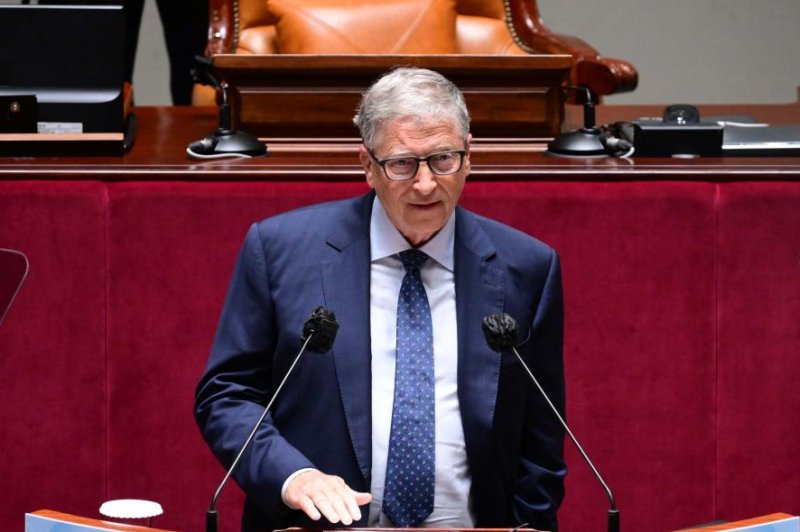
Billionaire philanthropist Bill Gates called on South Korea to play a greater role in tackling infectious diseases and fighting a "global health crisis." The Microsoft co-founder addressed the National Assembly in Seoul on Tuesday. Photo by Yonhap
SEOUL, Aug. 16 (UPI) -- Billionaire philanthropist and Microsoft co-founder Bill Gates urged South Korea on Tuesday to step up in the international fight against infectious diseases, saying that the country is poised to play a leading role during "a crisis moment for global health."
Gates, who co-chairs the Bill & Melinda Gates Foundation, addressed South Korean Parliament and praised the strides the country's health industry has taken, including "incredible vaccine manufacturing, incredible diagnostic manufacturing, R&D capabilities [and] diagnostic capabilities."
"Korea is poised to be a leader in this work," he said in his speech, which came on the second of a three-day visit to the country.
Gates highlighted South Korea's contributions to health initiatives, such as its $200 million contribution to the COVAX global vaccine-sharing program.
The country is also positioning itself as a global biomanufacturing training hub, recently launching a series of initiatives to train people from low- and middle-income countries to produce their own vaccines in partnership with the World Health Organization.
Gates said his namesake foundation signed a new agreement with the South Korean government to address health inequality and infectious diseases in the developing world.
"This is a crisis moment for global health, so this is also a fantastic time for our foundation to strengthen the partnership with Korea," Gates said, calling on Seoul to level up its international aid contributions.
"As you increase that generosity to match your economic success as the 10th-largest economy, you will be able to have incredible impact, particularly with partnerships like our foundation and multilateral global health organizations."
Ahead of his address, Gates met with National Assembly Speaker Kim Jin-pyo and other members of parliament and asked South Korea to boost its international aid contribution to 0.3% of GDP.
"International health solidarity and cooperation, including the joint response to COVID-19, is essential for the survival of humanity," Kim said, according to a statement.
Lawmakers added that South Korea has agreed to increase its participation in the Coalition for Epidemic Preparedness Innovations, a global foundation that works to develop vaccines against emerging infectious diseases.
Later Tuesday, Gates met with executives from local firm SK Bioscience -- which has developed several products, including South Korea's first homegrown COVID-19 vaccine, with funding from the Bill & Melinda Gates Foundation.
The 66-year-old billionaire was also scheduled to meet with South Korean President Yoon Suk-yeol on Tuesday.
Gates published the book How to Prevent the Next Pandemic in May and argued that COVID-19 could be the last pandemic if the world makes the requisite key investments.




















